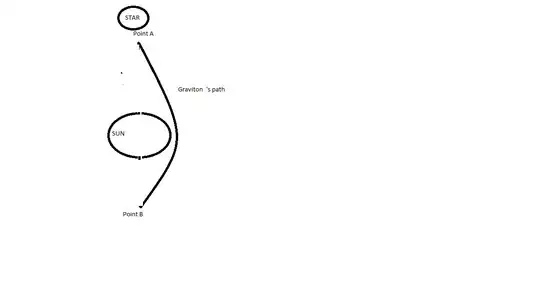In general relativity, gravitational waves carry energy. Even though they carry energy they can't function as a source of gravity (a stress-energy tensor) acting on objects far away from it. They rather affect other objects by passing them, not by causing a spacetime curvature due to stress-energy. They transport energy, but this energy can't be a source for gravity. There is simply no matter contained in the wave. It's an empty wave, so to speak. The wave is a pure deformation of spacetime itself, that had its origin in a form of stress-energy. The wave can now travel independently from its source and will certainly be affected in its motion if it encounters another piece of curved spacetime. They can even be trapped by a black hole spacetime.
If you consider the waves as made up of gravitons you can see the wave as a collection of them, traveling together through space (they don't travel through time). They can't form rays of gravity like photons can. Well, in theory, they can but then the energy-mass source has to oscillate at very high frequencies. If a collection of them travels through a curved spacetime they will follow the curvature of the encountered curvature. If you treat this curved spacetime as caused by (virtual) gravitons you encounter a problem though, It is said that the virtual gravitons are exchanged in a flat (non-curved) spacetime. But they are actually present in a spacetime that is curved. They actually cause the curvature, though the theory says they travel in flat spacetime. this contradiction is the very cause of the difficulties in handling spacetime quantum mechanically. String theory claims the difficulty is solved when you consider strings in flat spacetime, while loop quantum gravity handles the problem by quantizing spacetime itself. in string theory, there is no such thing as curved spacetime as encountered in general relativity. Strings are emitted and absorbed in flat spacetime. In lqg gravitational interaction is viewed as caused by traveling distortions of spacetime, which looks more compatible with general relativity. The gravitational waves are a collective of the small distortions and as such add up to the whole wave. Gravitons can also be seen as particles carrying "curvature information", like in string theory. For a point particle to contain curvature information is a bit difficult. It's therefore that strings can do the job. If point particles contained this information, than spacetime (where the particle is) would have infinite curvature. So both st as lqg have their advantages.
So, the problem is solvable in GR. Two Gw's will pass one another as if nothing happened. If the waves interact with an energy-momentum induced static spacetime it depends on this spacetime. The GW can be deflected or absorbed or even reflected.
So gravity can bend gravity.
In the light of gravitons, the spacetime surrounding Earth is composed of virtual gravitons. If a wave of real gravitons arrives, it will interact with this field of virtual gravitons. By exchanging virtual gravitons. Which makes the situation quite complicated. You could say that the situation is the same as in quantum chromodynamics (where interaction is mediated by colored gluons, which emit colored gluons themselves) but it's more complicated, as for gluons spacetime is flat. Only in flat spacetime (low energy) approximation, the gravitons can be described in a quantum theory (linearized quantum gravity).
